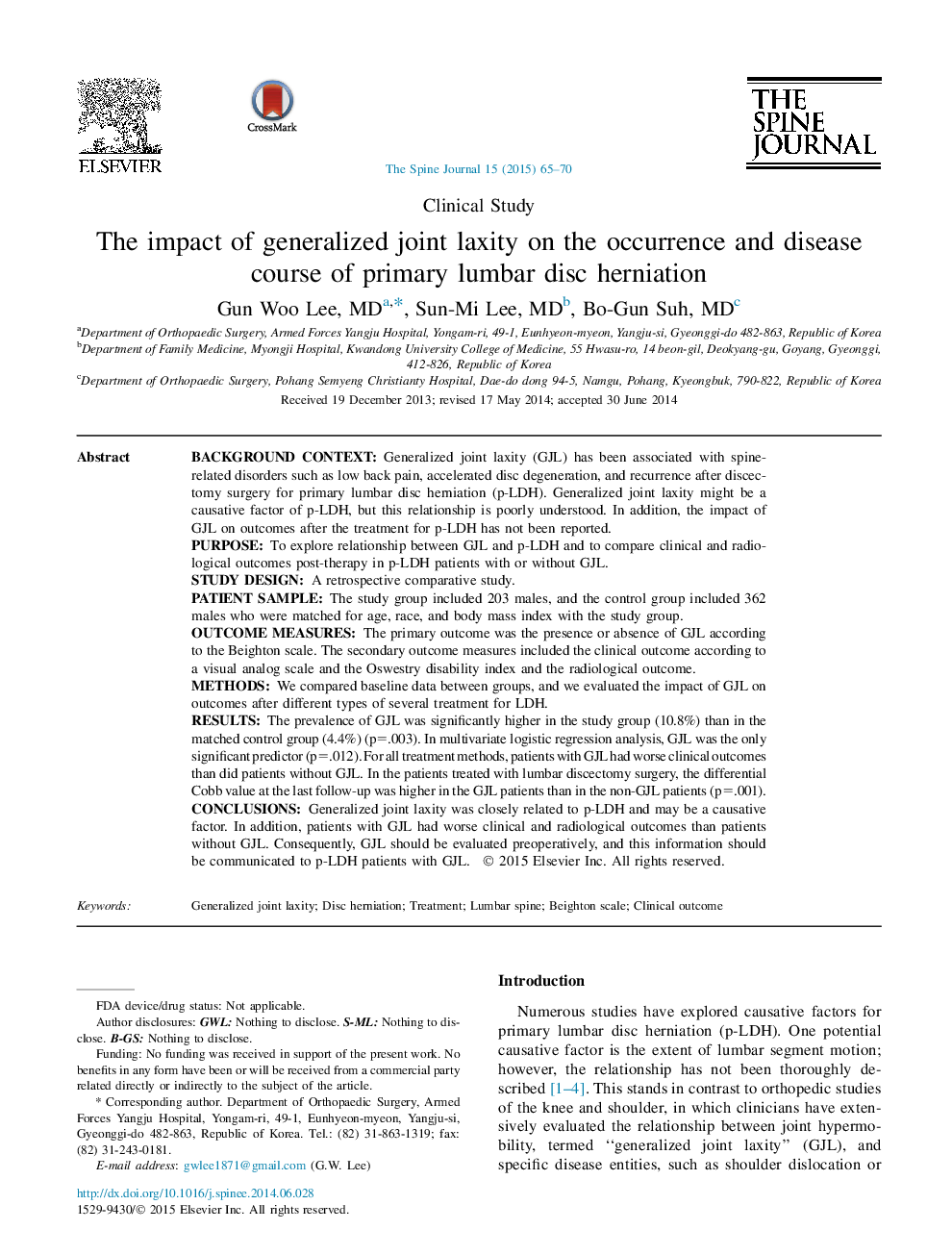| کد مقاله | کد نشریه | سال انتشار | مقاله انگلیسی | نسخه تمام متن |
|---|---|---|---|---|
| 4096500 | 1268564 | 2015 | 6 صفحه PDF | دانلود رایگان |
Background contextGeneralized joint laxity (GJL) has been associated with spine-related disorders such as low back pain, accelerated disc degeneration, and recurrence after discectomy surgery for primary lumbar disc herniation (p-LDH). Generalized joint laxity might be a causative factor of p-LDH, but this relationship is poorly understood. In addition, the impact of GJL on outcomes after the treatment for p-LDH has not been reported.PurposeTo explore relationship between GJL and p-LDH and to compare clinical and radiological outcomes post-therapy in p-LDH patients with or without GJL.Study designA retrospective comparative study.Patient sampleThe study group included 203 males, and the control group included 362 males who were matched for age, race, and body mass index with the study group.Outcome measuresThe primary outcome was the presence or absence of GJL according to the Beighton scale. The secondary outcome measures included the clinical outcome according to a visual analog scale and the Oswestry disability index and the radiological outcome.MethodsWe compared baseline data between groups, and we evaluated the impact of GJL on outcomes after different types of several treatment for LDH.ResultsThe prevalence of GJL was significantly higher in the study group (10.8%) than in the matched control group (4.4%) (p=.003). In multivariate logistic regression analysis, GJL was the only significant predictor (p=.012). For all treatment methods, patients with GJL had worse clinical outcomes than did patients without GJL. In the patients treated with lumbar discectomy surgery, the differential Cobb value at the last follow-up was higher in the GJL patients than in the non-GJL patients (p=.001).ConclusionsGeneralized joint laxity was closely related to p-LDH and may be a causative factor. In addition, patients with GJL had worse clinical and radiological outcomes than patients without GJL. Consequently, GJL should be evaluated preoperatively, and this information should be communicated to p-LDH patients with GJL.
Journal: The Spine Journal - Volume 15, Issue 1, 1 January 2015, Pages 65–70
